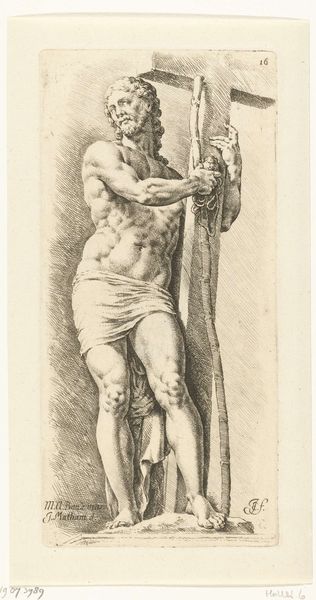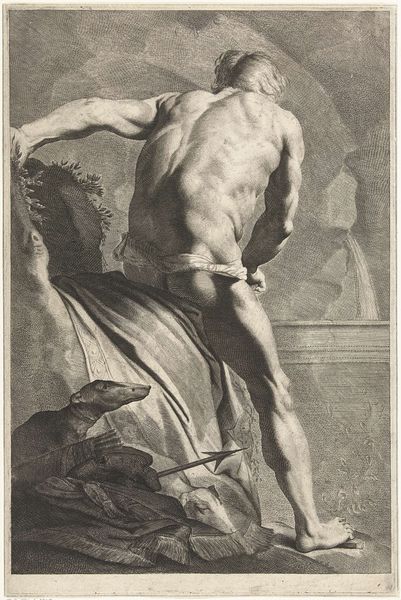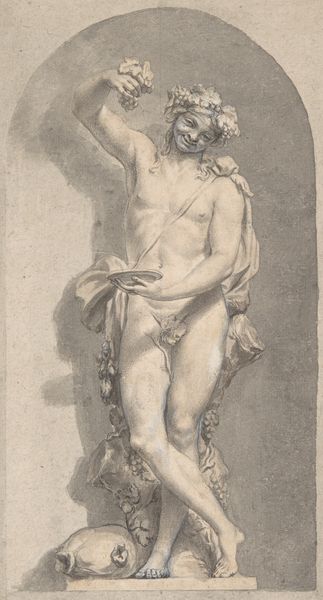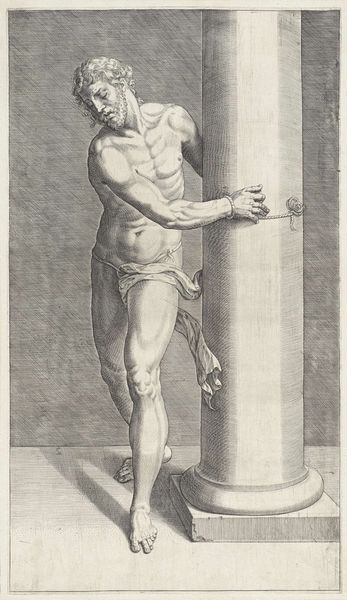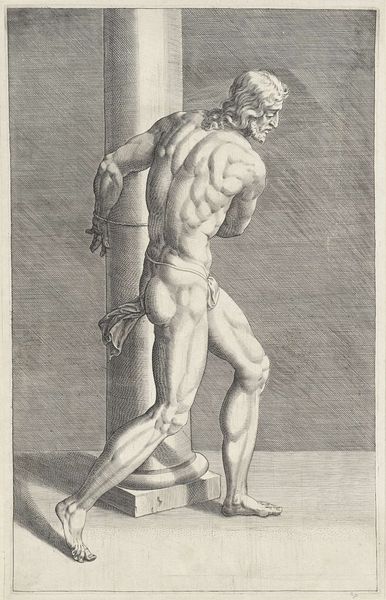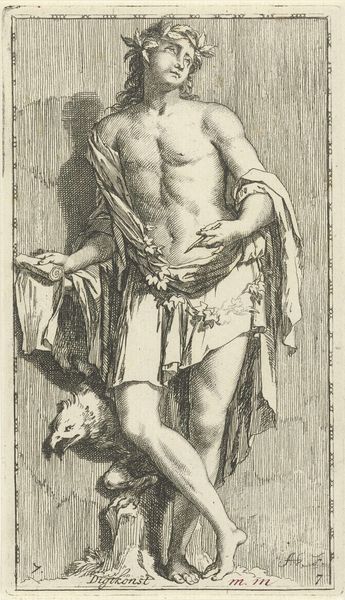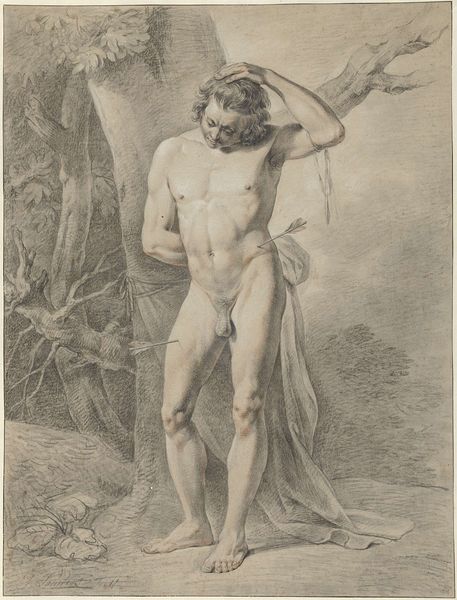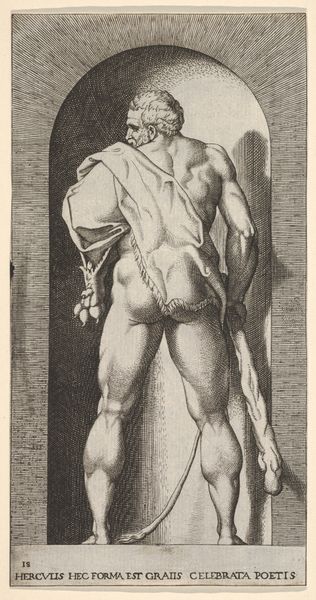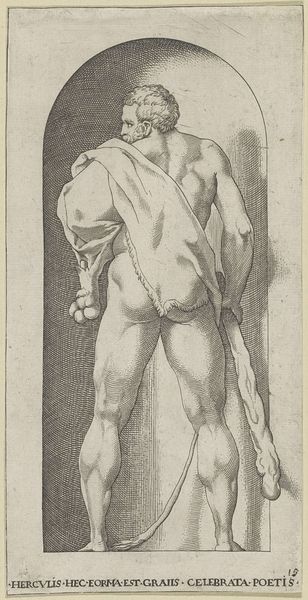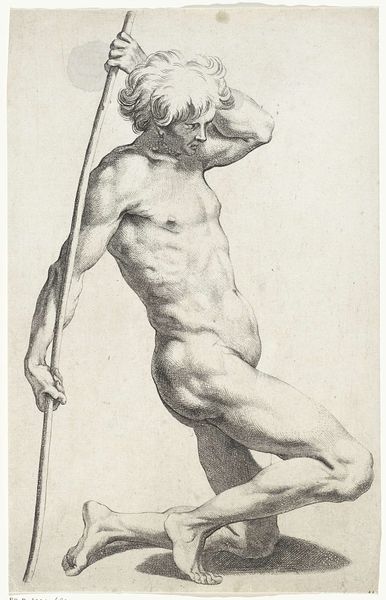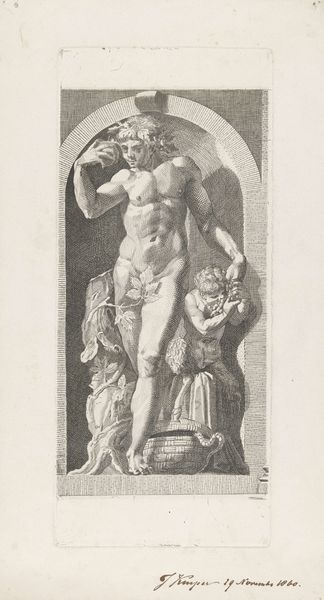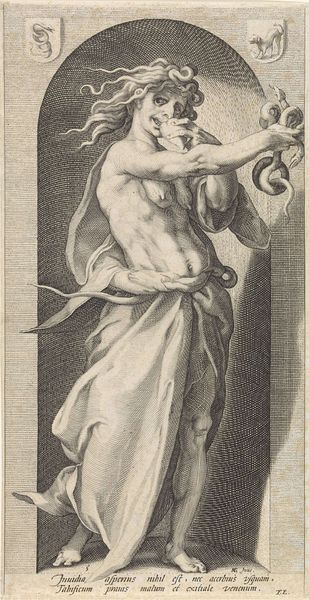
print, engraving
#
portrait
# print
#
pencil drawing
#
history-painting
#
italian-renaissance
#
engraving
Dimensions: height 364 mm, width 245 mm
Copyright: Rijks Museum: Open Domain
Curator: Here we have Jacob Matham's print, "Standing Christ with Cross," dating from between 1600 and 1604. It's currently part of the Rijksmuseum's collection. The work depicts Christ standing holding a cross. It's rendered in engraving, and its form suggests its based off of Michelangelo’s sculptures. Editor: The musculature jumps out immediately. The almost aggressively toned physique against the sombre scene seems to indicate physical and mental resolve, making a political point about both spiritual resistance. Curator: That reading certainly resonates. What's compelling from a historical perspective is seeing how Matham interpreted Michelangelo's sculptures through the lens of printmaking. He's not just replicating; he's translating a three-dimensional work into a two-dimensional medium for wider consumption, furthering the reach of idealized forms. Editor: Exactly. Considering Matham's role as a transmitter, how does the distribution of this image influence its socio-political impact? Was the message of perseverance directed toward any particular community or cause within that historical context? The contrast between the muscular Christ and the rather ordinary cross begs such questions. Curator: Absolutely. The distribution of prints like these played a critical role in disseminating religious and political ideas. The image could be reproduced and circulated relatively easily, reaching audiences far beyond the elite circles who had access to sculptures and paintings. It democratized imagery, enabling it to function as propaganda during periods of religious and political upheaval. Editor: Propaganda might be too strong, but it definitely underscores art's utility in reinforcing ideological frameworks. What is striking is how images, in this case prints like this, become cultural commodities in their own right. As reproductions they help dictate, subtly, norms of representation for future generations. Curator: Well said. It speaks to how we interpret this work now, centuries removed from its original context, understanding how it functioned within its own time, as a cultural artifact. Editor: It prompts us to think critically about the lasting impacts of imagery and its role in shaping perceptions of not only religious or political strength but cultural identity too. Thank you for providing us with some crucial contexts around this Matham Print.
Comments
No comments
Be the first to comment and join the conversation on the ultimate creative platform.
